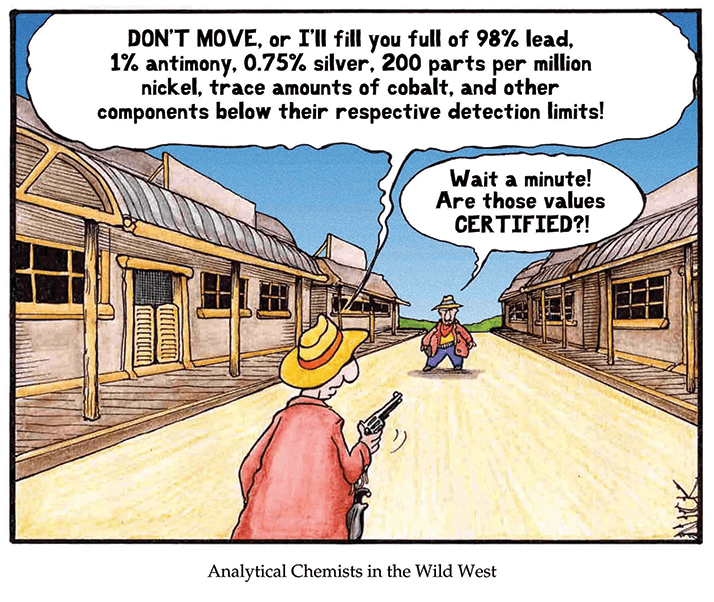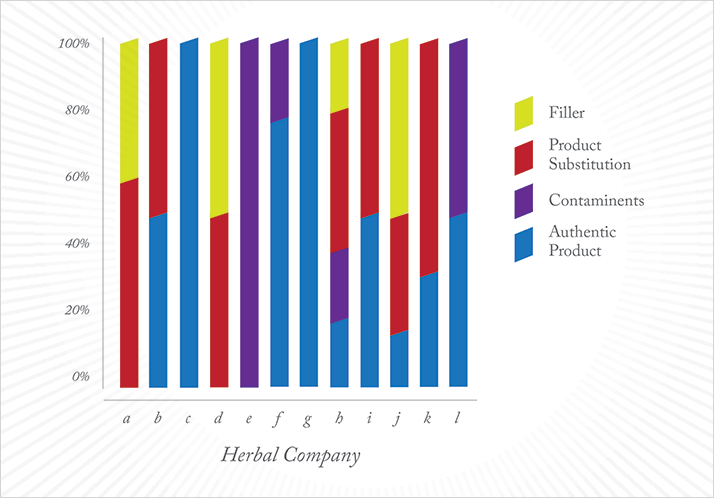
It is easy to take accurate labeling of goods for granted. For instance, the meals we devour – as well as the indigestion tablets that follow – come from highly regulated industries. When you walk into a store stocked with “healthy” herbal supplements, which in most countries are monitored by health authorities, you may assume that a similar level of regulation applies. How wrong you’d be.
Steven Newmaster, botanical director of the Biodiversity Institute of Ontario, and his colleagues at the University of Guelph, Canada, have used DNA barcoding (DNA extraction and sequencing) to conduct blind authenticity testing of 44 herbal products from 12 different companies, representing 30 different species of herbs. The results, represented in Figure 1, are quite shocking.

Newmaster told us more about the study that appears in an Open Access journal (1).
Why did you study natural health products (NHPs)? Problems with product contamination and substitution have been identified in other sectors – we felt it was important to extend testing to the NHP marketplace. What did you expect to find? You can’t approach this work with set expectations; rather, you must follow the data. Having said that, there have been several smaller studies, referenced in our paper, that identified contamination in herbal teas and medicinal plant products. And a recent scientific review (2) listed 60 publications that have used DNA barcoding of medicinal plants; many of them reported positive tests for contamination.
Were the results surprising to you? Our real surprise came previously, when we revealed the level of mislabeling in seafood. The reaction this time was more one of disappointment that the same problems exist in NHPs, especially considering the risks to consumer health that have been identified. How far has the rot spread? This problem appears to be very widespread. We have now tested NHPs from India, China, UK and Australia, and we found substitution, contamination, and use of fillers across the board. When we tested goods in other sectors, such as herbs, spices, and other plant products used in food (oils for example), we found that the issue is systemic in the marketplace. With fish products, trade reports suggest that perhaps 10 percent of products are subject to some form of fraud; from our work on NHPs and seafood, I’d say that 10 percent is a very conservative estimate. I am sure you will hear of more studies in the near future, so stay tuned.
Where do we go from here? We suggested in our paper that testing would not cost that much for the industry, if they tested the bulk containers used to manufacture products. This approach has been embraced by some industry members and we are working with them. Remember that manufacturers can be victims of fraudulent substitution and contamination as well as perpetrators of it; they trust their suppliers, who claim their products are authentic. We are currently working with manufacturers and testing labs to set up protocols for proper testing, as well as working with existing product authentication and traceability systems. For us, working to clean up the marketplace is a rewarding activity.
References
- S. G. Newmaster et al., “DNA Barcoding Detects Contamination and Substitution in North American Herbal Products”, BMC Medicine (2013). DOI: 10.1186/1741-7015-11-222 N. Techen et al., “DNA barcoding of medicinal plant material for identification”, Curr. Opin. Chem. Biol., 25, 103–110 (2014).




